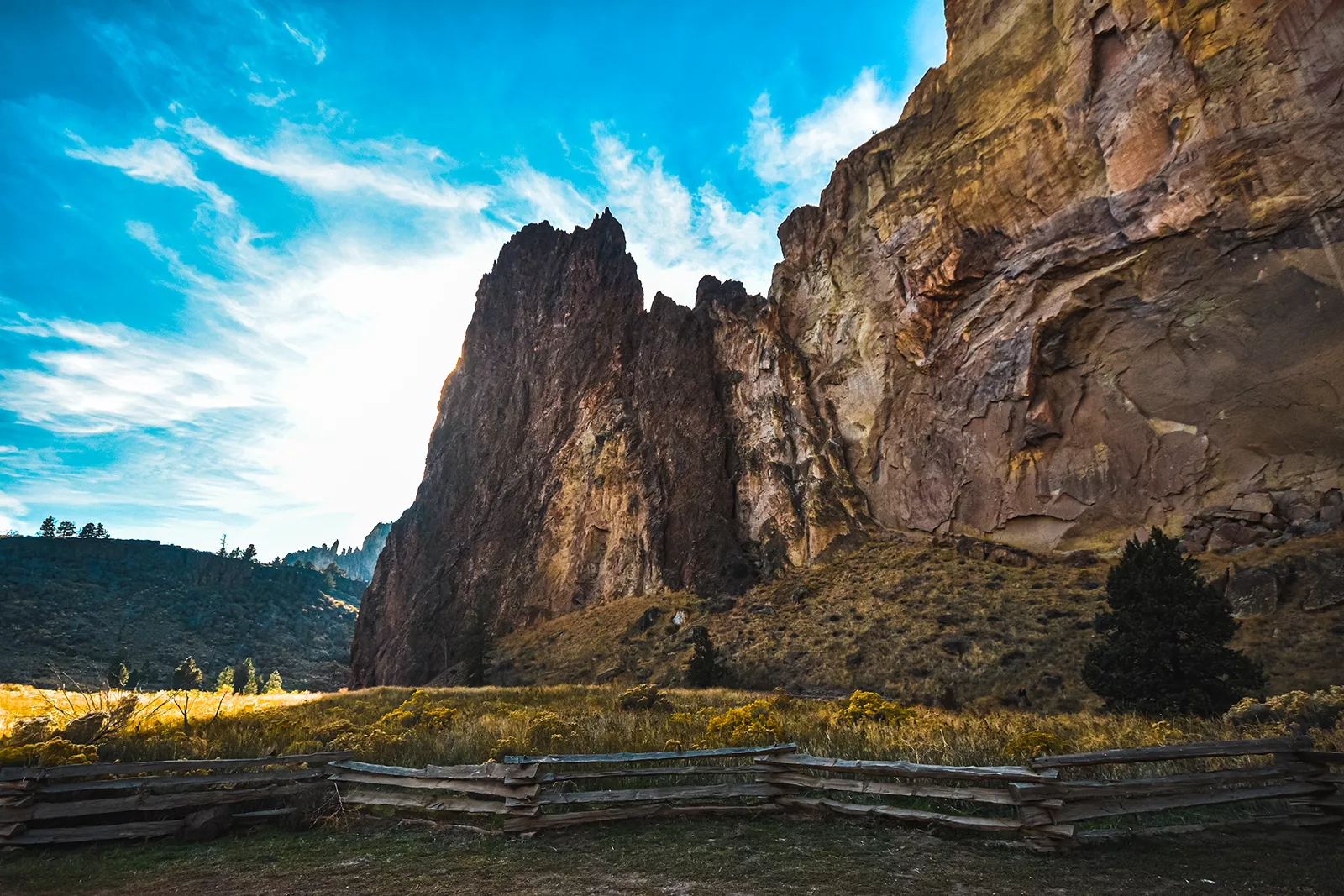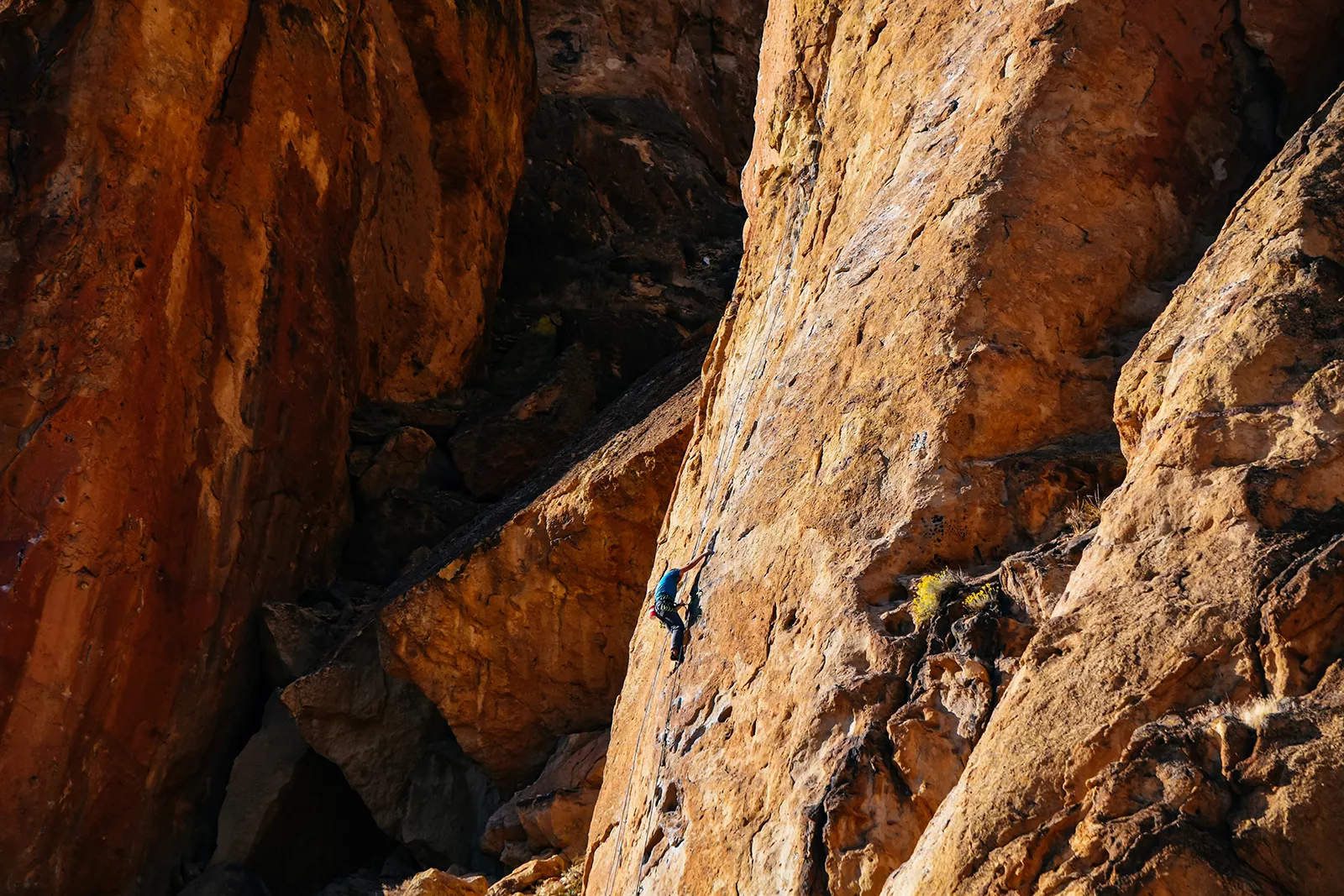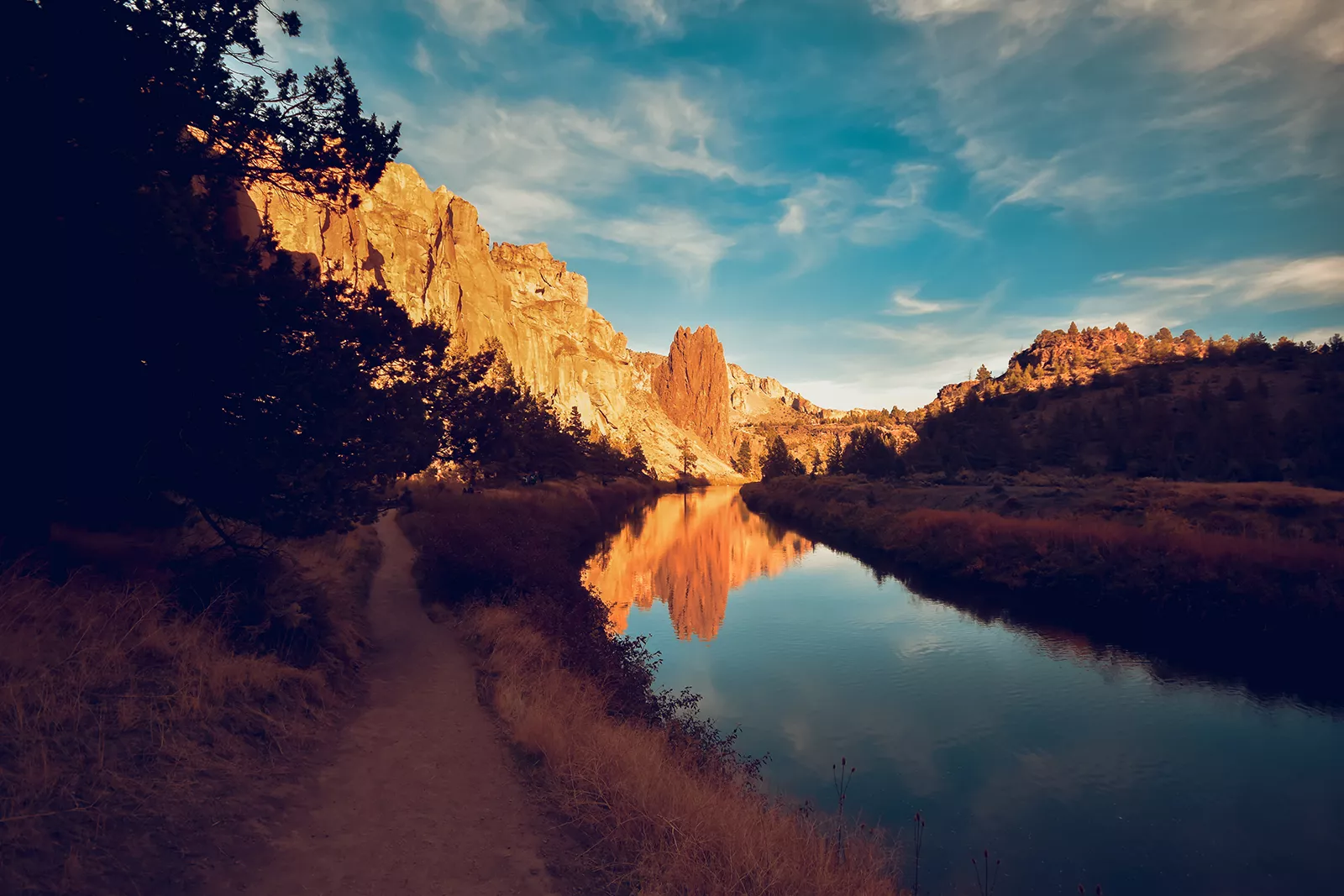Smith Rock State Park: Hiking Amidst Towering Spires
Nestled in the heart of Oregon, Smith Rock State Park is a sprawling natural wonder that covers over 650 acres of diverse landscapes. With its towering rock formations, scenic trails, and abundant recreational opportunities, this park has become a beloved destination for outdoor enthusiasts from around the globe. Whether you’re an avid rock climber, a hiker seeking breathtaking views, or a nature lover in search of wildlife encounters, Smith Rock State Park offers an unforgettable experience for all who venture into its realm.
One of the standout features of Smith Rock is its reputation as a premier rock climbing destination. With several thousand climbs available, including over a thousand bolted routes, it’s no wonder that climbers flock to this park. The unique geology of Smith Rock, characterized by cliffs of tuff and basalt, provides an ideal canvas for climbers of all skill levels. From sport climbing to traditional climbing and bouldering, there are endless opportunities to challenge yourself and test your climbing prowess.
Beyond the hiking and rock climbing many initially think of, Smith Rock State Park offers an array of additional activities and attractions to explore. Wildlife enthusiasts can observe golden eagles, falcons, river otters, and beavers in their natural habitats, adding a touch of adventure to their outdoor escapades. The park’s unique geological history, with its volcanic ash and lava deposits dating back millions of years, provides a fascinating backdrop for geological exploration and education.
Smith Rock State Park is a must-visit in Central Oregon. With trails for all skill levels, incredible views from every corner, and ample space for walking, running, and biking, it’s an outdoor enthusiast’s paradise.
To ensure a seamless visit to Smith Rock State Park, it’s advisable to plan your trip accordingly. The park is open year-round, but it’s essential to keep in mind that summer temperatures can reach 100°F (38°C), making the cooler months a more comfortable time for outdoor activities. Day-use visitors are required to obtain a $5 day-use permit or present a current state park camp receipt, available from self-service pay stations or the Welcome Center (permit information and cost subject to change).
Geologically, Smith Rock dates back millions of years and is primarily composed of welded tuff and basalt. The story begins around 30 million years ago when volcanic eruptions deposited layers of ash, debris, and lava flows in the area. Over time, these materials were compacted and hardened, resulting in the formation of the rock structures that we see today.
Smith Rock’s prominent rock formations are a result of the erosive forces of the Crooked River, which has carved its way through the landscape over thousands of years. The river, flowing through a narrow gorge, has gradually cut through the layers of ash and basalt, exposing the towering cliffs and unique geological features. The result is a breathtaking canyon surrounded by soaring rock spires, crags, and pinnacles.
In addition to its geological significance, Smith Rock also has a rich cultural history. The park’s land was obtained between 1960 and 1975 through a combination of purchases and gifts from the city of Redmond and Harry and Diane Kem. The park’s establishment was driven by a desire to preserve its unique geological formations, provide recreational opportunities, and protect its diverse flora and fauna.
The park’s name, Smith Rock, is a subject of debate and speculation. One theory suggests that the park was named after John Smith Linn, a lawman from Linn County who had a significant influence in the area during the 19th century. Another theory proposes that it was named after Private Volk Smith, a soldier who tragically lost his life during a battle with the Northern Paiute tribe in the park in 1863. Despite the ongoing debate, the name “Smith Rock” has stuck and become synonymous with this iconic natural landmark.
Smith Rock has long been a sacred place for Native American tribes, including the Northern Paiute, who have deep ancestral ties to the area. For centuries, Native Americans relied on the natural resources of the region for sustenance and cultural practices. Evidence of their presence can be found in the remnants of ancient settlements and petroglyphs etched into the rocks.

Over the years, Smith Rock has evolved into a world-class destination for rock climbers, with its popularity skyrocketing in the 1980s when it became known as the birthplace of American sport climbing. Today, it continues to attract climbers from around the world who are drawn to its challenging routes and unique geological features.
Smith Rock State Park was officially designated as a state park in 1958 and has since become one of Oregon’s most beloved natural landmarks. Its stunning geological formations, rich history, and cultural significance have earned it recognition as one of the “7 Wonders of Oregon,” solidifying its status as an iconic destination for outdoor enthusiasts, nature lovers, and those seeking an awe-inspiring experience in the heart of Central Oregon.
As visitors explore Smith Rock State Park, they can’t help but marvel at the convergence of geological forces and human history that have shaped this remarkable landscape. The towering cliffs, majestic spires, and the meandering Crooked River stand as testaments to the power of nature, while the cultural and historical heritage add layers of depth and meaning to this exceptional natural wonder.
Smith Rock State Park Camping
Camping at Smith Rock State Park provides an immersive outdoor experience, allowing visitors to fully embrace the natural beauty of the park and its surroundings. The park offers camping options for tent campers, providing a range of facilities and amenities to ensure a comfortable stay amidst the stunning landscapes.
The Bivy Campground is the designated camping area within Smith Rock State Park. This walk-in tent camping area offers a rustic camping experience, with sites nestled among the juniper trees and shrubs. The campground operates on a first-come, first-served basis, meaning that campers should arrive early to secure a site, especially during peak seasons and weekends. It’s advisable to check the park’s website or contact the park authorities for any updated information or specific guidelines regarding camping availability.
RV camping is not permitted within the Bivy Campground or the main park area. However, there are nearby RV parks and campgrounds in the surrounding area that cater to RV campers. These options provide facilities such as hookups for water and electricity, dump stations, and sometimes even Wi-Fi access. Some of these nearby RV parks may offer a more convenient and comfortable camping experience for those traveling with RVs or trailers.

When camping at Smith Rock, it’s important to note that open fires are not allowed in the park. This regulation is in place to protect the fragile ecosystem and prevent wildfires. However, camp stoves and propane grills are permitted for cooking purposes. It’s advisable to bring your own camping stove or grill along with any necessary cooking utensils and supplies.
Restroom facilities are available within the Bivy Campground, providing basic amenities such as toilets and sinks. Additionally, the campground offers showers exclusively for overnight guests, allowing campers to freshen up after a day of outdoor activities. It’s important to note that the showers are only accessible to those who have obtained a camping permit and are staying overnight in the Bivy Campground.
To secure a camping permit, campers can visit the fee station located at the entrance to the Bivy Campground. Camping fees are $8 per person per night (subject to change), and payment can be made at the fee station. It’s advisable to carry cash or check for the camping fees, as credit card payment may not be available at the fee station. Additionally, it’s important to display the camping permit in a visible manner at the campsite, as park rangers may conduct periodic checks.

While camping at Smith Rock, it’s crucial to follow Leave No Trace principles and respect the natural environment. This includes packing out all trash and waste, leaving the campsite as you found it, and minimizing your impact on the surroundings. Being mindful of noise levels, particularly during quiet hours, ensures a peaceful and enjoyable experience for all campers.
Lastly, it’s worth mentioning that Smith Rock State Park is a popular destination, and camping availability can vary depending on the season and demand. It’s advisable to plan your camping trip in advance, particularly if you’re visiting during peak seasons or weekends, to increase the likelihood of securing a campsite. Consider arriving early in the day to maximize your chances of finding an available site within the Bivy Campground.
Camping at Smith Rock State Park offers a unique opportunity to connect with nature, sleep under the stars, and wake up to the serene beauty of the surrounding landscapes. Whether you choose to pitch a tent in the Bivy Campground or opt for an RV park nearby, camping at Smith Rock allows you to fully immerse yourself in the park’s natural wonders and create unforgettable memories of your outdoor adventure.
Smith Rock State Park stands as a testament to the awe-inspiring beauty and diverse recreational opportunities that the natural world has to offer. From its world-class rock climbing routes to its extensive network of hiking trails, this park provides a sanctuary for outdoor enthusiasts seeking thrilling adventures and unforgettable experiences. As you explore the park’s trails, immerse yourself in the splendor of the surrounding landscapes, keep an eye out for unique wildlife encounters, and embrace the tranquility of nature. Smith Rock State Park truly is a natural wonderland that will leave you with memories to last a lifetime.
Smith Rock State Park Trails
Smith Rock is not solely reserved for climbers. The park’s extensive trail system invites hikers to explore its breathtaking landscapes and immerse themselves in nature. Boasting over seven miles of trails, Smith Rock offers options for hikers of all abilities and preferences. Whether you’re seeking a leisurely stroll or a challenging trek, there’s a trail to suit your desires.
For those looking for an easier hike with stunning views, the Crooked River Trail is a perfect choice. This 4.5 mile in-and-out trail meanders alongside the picturesque Crooked River, providing hikers with scenic vistas of the surrounding cliffs and buttes. As you traverse the trail, keep an eye out for local wildlife such as deer, river otters, and beavers, which often make appearances along the riverbanks. The gentle terrain and serene atmosphere make the River Trail an excellent option for families and casual hikers.
On the other end of the spectrum, experienced hikers seeking a more exhilarating challenge can set their sights on the Misery Ridge and Summit Trail Loop. This demanding six-mile loop incorporates portions of the Misery Ridge Trail and the Summit Trail, offering hikers a chance to conquer steep ascents and be rewarded with panoramic views of the park and its surroundings. While the Misery Ridge Trail tests your physical endurance, the stunning vistas from the summit make it all worthwhile. It’s important to note that this trail is recommended for experienced hikers due to its rugged terrain and elevation changes.
Another captivating hiking option is the Homestead Trail, which takes you on a journey through history and nature. This trail starts in the heart of the park’s canyon, surrounded by towering cliffs and unique rock formations. As you venture along the Homestead Trail, you’ll encounter remnants of early settlers’ homesteads, offering a glimpse into the area’s rich past. The trail winds through diverse landscapes, providing hikers with a mix of open vistas and shaded areas. The Homestead Trail is a moderate hike that rewards you with a deeper understanding of the park’s cultural heritage and natural beauty.
In addition to these highlighted trails, Smith Rock State Park offers a multitude of other hiking options, each with its own unique charm and appeal. Whether you’re exploring the challenging steep inclines with breathetaking views, or quick out and back birdwatching journeys, there is no shortage of opportunities to connect with nature and create lasting memories.
As you embark on your hiking adventures in Smith Rock State Park, it’s essential to respect the park’s regulations and preserve its fragile ecosystem. Stay on marked trails to prevent erosion and protect the natural environment. Remember to dress appropriately for the weather conditions, wear sturdy footwear with good traction, and bring an ample water supply to stay hydrated, particularly during the scorching summer months when temperatures can soar. Familiarize yourself with trail maps and adhere to safety recommendations provided by the park authorities to ensure a safe and enjoyable hiking experience.
What’s Nearby Smith Rock State Park
Surrounding Smith Rock State Park, there are several captivating nearby locations that offer their own unique natural wonders. Dee Wright Observatory provides panoramic views of the Cascade Mountains, showcasing the rugged volcanic landscape. Tamolitch Falls, also known as Blue Pool, enchants visitors with its vibrant blue waters and tranquil setting. Paulina Falls impresses with its majestic cascades in a scenic volcanic backdrop.
Crater Lake National Park, home to the stunning Crater Lake, boasts some of the purest and deepest blue waters in the world, formed within the caldera of Mount Mazama. The Big Obsidian Flow Trailhead and Interpretive Site allows exploration of vast obsidian fields, shedding light on the region’s volcanic history. Salt Creek Falls astounds with its towering waterfall surrounded by lush forest. And Little Crater Lake offers a hidden gem—a pristine turquoise lake fed by a natural spring. These nearby locations complement the beauty of Smith Rock State Park, inviting visitors to explore the diverse natural wonders of Central Oregon.
Smith Rock State Park Parking Information
Smith Rock State Park is easily accessible by car and offers parking facilities for visitors. To reach the park, take US Highway 97 to Terrebonne, Oregon. From there, follow the signs directing you to Smith Rock State Park. As you approach the park entrance, you will find designated parking areas where you can safely leave your vehicle while you explore the park.
It’s important to note that Smith Rock State Park is a popular destination, particularly during peak seasons and weekends. As a result, parking can be limited, and the lots can fill up quickly. To secure a parking spot, it’s advisable to arrive early in the day, especially if you plan to visit during busy periods. Arriving early not only increases your chances of finding parking but also allows you to enjoy the park’s attractions before they become crowded.



